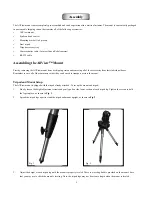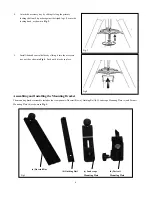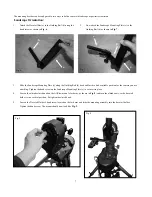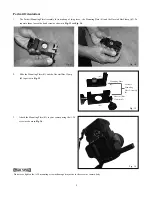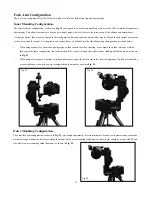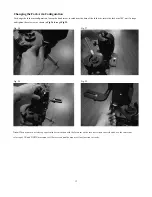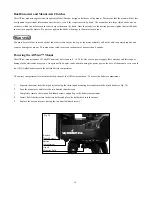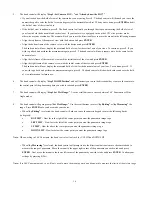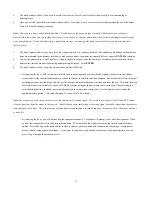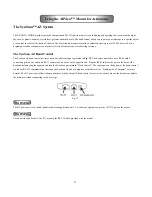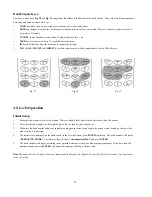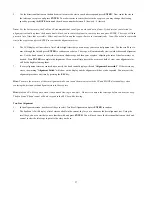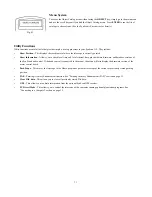
19
5.
The hand control will ask if you wish to exit the layer editor. Press
1
to exit the editor and press
2
to continue adding or
deleting layers.
6.
Once you exit the layer editor, the hand control will ask if you want to save your current layer configuration for use in the future,
Press
1
to save the changes you made.
Note: There are two layers called Zenith and Nadir. Zenith refers to the point straight overhead, while Nadir refers to the spot
directly below the mount. You can include these layers if you choose, or you may delete them if you do not want images taken straight
up or straight down. If you delete these layers and attempt to save your changes, the hand control will ask if you want to add these
layers back in.
7.
The hand control will now ask you to level the scope and move it to the home position. The altitude layers defined in the previous
steps are measured from the home position, so make sure you have the mount set correctly before you press
ENTER
to continue.
8.
You will be prompted to set the Time Halt. Using the numeric keypad, enter the number of seconds you want the mount to halt
between the time the mount stops moving and capturing the image. Press
ENTER
.
9.
The hand control will ask if you want to continue with Auto Shooting.
• By pressing the
1
key, AllView mount will work in auto-shooting mode, which will send signals via the electronics shutter
release cable to the camera to automatically release the shutter for each shot in the panorama. The mount will slew to its proper
picturing position, take the image and move to the next picture point without any intervention from the user. This auto-shooting
function is especially suitable for Canon EOS DSLR cameras using the shutter release cable (included). After selecting the
auto-shooting function, the hand control will prompt you to set exposure control time. Use the numeric keys to input the
appropriate time setting. This can be between 0.1 seconds to 999.9 seconds.
Note: The mount’s exposure time does not refer to the camera’s exact shutter speed. This refers to the timing of the ON and OFF shutter
release signal sent from the mount to the camera. Usually the exposure time setting of this snap signal should be longer than the exposure
time setting on the camera. The actual shutter speed and aperture adjustments should be made on the camera itself. The mount does not
control this.
• By pressing the
2
key, you will be shooting the exposures manually. The mount will prompt you to start the alignment. When
you do, the mount will slew to the first picture position. You would then take the picture using the camera’s shutter release
button. Press the
3
key on the hand control to slew to the next picture position and manually take the image. Continue this
process until all images have been taken. At any time, if you want to go back and reshoot any of the picture points, you can
press
1
to go through the points in reverse.

